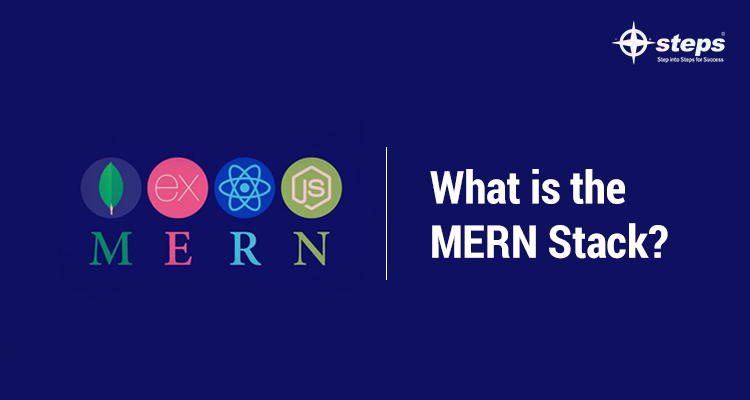What is the MERN Stack?

MERN stands for MongoDB, Express, React, Node, when the four key technologies that compose the stack.
• MongoDB – document information
• Express(.js) – Node.js net framework
• React(.js) – A JavaScript library for building user interfaces
• Node(.js) – the premier JavaScript net server
MERN is one in every of many variations of the MEAN Stack (MongoDB categorical Angular Node), wherever the standard Angular.js frontend framework is replaced with React.js. different variants embody MEVN (MongoDB, Express, Vue, Node), and very any frontend JavaScript framework will work.
Express and Node compose the center (application) tier. Express.js may be a server-side net framework, and Node.js the popular and powerful JavaScript server platform. No matter that variant you select, ME(RVA)N is that the ideal approach to operating with JavaScript and JSON, all the manner through.
How will the MERN Stack work?
The MERN design permits you to simply construct a 3-tier design (frontend, backend, database) entirely mistreatment JavaScript and JSON.

React.js Front End
The top tier of the MERN stack is React.js, the declarative JavaScript framework for making dynamic client-side applications in markup language.
React helps you to build up advanced interfaces through straightforward parts, connect them to knowledge on your backend server, and render them as markup language.
React’s sturdy suit is handling stateful, data-driven interfaces with the smallest code and smallest pain, and it’s all the bells and whistles you’d expect from a contemporary net framework: nice support for forms, error handling, events, lists, and more.
Express.js and Node.js Server Tier
The next level down is that of the categorical.js server-side framework, running within a Node.js server. Express.js bills itself as a “fast, unopinionated, minimalist net framework for Node.js,” which is so specifically what it’s.
Express.js has powerful models for URL routing (matching associate degree incoming URL with a server function), and handling hypertext transfer protocol requests and responses.
By creating XML hypertext transfer protocol Requests (XHRs) or GETs or POSTs from your React.js front-end, you’ll hook up with categorical.js functions that power your application.
Those functions successively use MongoDB’s Node.js drivers, either via callbacks for mistreatment guarantees, to access and update knowledge in your MongoDB information.
MongoDB Database Tier
If your application stores any knowledge (user profiles, content, comments, uploads, events, etc.), then you’re reaching to need an information that’s even as straightforward to figure with as React, Express, and Node.
That’s wherever MongoDB comes in: JSON documents created in your React.js forepart may be sent to the categorical.js server, wherever they’ll be processed and (assuming they’re valid) keep directly in MongoDB for later retrieval. Again, if you’re building within the cloud, you’ll wish to appear at Atlas. If you’re trying to line up your own MERN stack, read on!
Is MERN a full-stack solution?
Yes, MERN may be a full-stack, following the standard 3-tier bailiwick pattern, together with the front-end show tier (React.js), application tier (Express.js and Node.js), and information tier (MongoDB).
Why choose the MERN stack?
Let’s begin with MongoDB, the document information at the basis of the MERN stack. MongoDB was designed to store JSON knowledge natively (it technically uses a binary version of JSON known as BSON), and everything from its instruction interface to its command language (MQL, or MongoDB question Language) is constructed on JSON and JavaScript.
MongoDB works extraordinarily well with Node.js, and makes storing, manipulating, and representing JSON knowledge at each tier of your application implausibly straightforward.
For cloud-native applications, MongoDB Atlas makes it even easier, by providing you with associate degree auto-scaling MongoDB cluster on the cloud supplier of your alternative, as straightforward as many button clicks.
Express.js (running on Node.js) and React.js build the JavaScript/JSON application MERN full stack, well, full. Express.js may be a server-side application framework that wraps hypertext transfer protocol requests and responses, and makes it straightforward to map URLs to server-side functions.
React.js may be a frontend JavaScript framework for building interactive user interfaces in markup language, and human action with a distant server.
The combination implies that JSON knowledge flows naturally from front to back, creating it quick to make on and fairly straightforward to right. Plus, you merely got to understand one programming language, and therefore the JSON document structure, to know the total system!
MERN is that the stack of alternative for today’s net developers trying to maneuver quickly, notably for those with React.js expertise.
MERN Use Cases
Like any net stack, you’ll build no matter you would like in MERN – tho’ it’s ideally fitted to cases that are JSON-heavy, cloud-native, which have dynamic net interfaces.
A few examples would possibly be: – progress management – News aggregation – Todo apps and Calendars – Interactive forums / social product. And no matter else you’ll dream up!
If you trained beneath the best institution, you will get the best carrier. The institution for Best MEARN Stack Training in Kochi will help you learn all the concepts of MEARN Stack with real time eventualities, live example by real time professionals. Workers with coaching job in MongoDB with AngularJS or ReactJS could be there to companies.
Kochi is that the IT hub of Kerala and developer desires unit on the rise. If you’re doing an MEARN Stack Training in Kochi you get more information in MEARN Stack project which incorporates a better preference among candidates and hence an honest earnings as developers.

